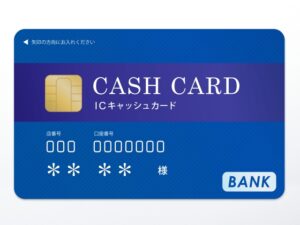Moving to Japan is an exciting adventure, but it also comes with a list of essential tasks.
One of the most crucial steps is opening a Japanese bank account.
You’ll need it for receiving your salary, paying rent and bills, and managing your daily finances.
Traditionally, this process was notoriously difficult for foreigners, involving lots of paperwork, a personal seal (hanko), and language barriers at a physical branch.
The good news?
Times have changed.
Today, several modern banks allow you to open an account entirely online, often with English support.
This guide will show you how.
Why You Need a Japanese Bank Account
While you might survive for a short time with your home bank account and cash, a local bank account is essential for long-term stays.
Here’s why:
- Receiving Salary: Most Japanese companies will only pay salaries into a domestic bank account.
- Paying Rent & Utilities: Automatic bill payments (引き落とし, hikiotoshi) are the standard way to pay for rent, gas, electricity, and your phone bill.
- Social Credibility: Having a local bank account is often a requirement when signing up for other services, like a gym membership or a new phone plan.
What You’ll Need to Apply
Before you start, make sure you have the following documents ready.
You must be a resident of Japan to apply.
- Your Residence Card (在留カード, Zairyu Card): This is your primary form of ID in Japan. You must have been in Japan for at least six months for most banks. Need to get one? Check our Residence Card Guide.
- Your My Number Card (マイナンバーカード): While not always mandatory, having this card makes the online identity verification process much smoother. Learn how to get yours in our My Number Card Guide.
- A Japanese Phone Number: Banks will use this for verification (SMS authentication).
Important: Tourists and short-term visitors (under six months) are generally not eligible to open a bank account in Japan.
Top 3 Online Banks for Foreigners
Here are our top recommendations for foreigner-friendly online banks.
1. Sony Bank
Best for English support and international features.
Sony Bank is widely regarded as one of the best choices for foreign residents.
Their website and app are available in English, customer support is multilingual, and their multi-currency debit card is excellent for international transactions and travel.
→ Visit the official Sony Bank English website
2. Rakuten Bank
Best for earning points and integrating with other services.
If you use other Rakuten services (like Rakuten Mobile or Rakuten Card), this bank is a fantastic choice.
You can earn Rakuten Points on your transactions, which can be used for shopping and more.
The application process is straightforward, though primarily in Japanese.
→ Visit the official Rakuten Bank website (Japanese)
3. PayPay Bank
Best for users of PayPay and other Z Holdings services.
Linked to Japan’s most popular QR code payment app, PayPay, this bank offers seamless integration for mobile payments.
If you’re a heavy user of PayPay or Yahoo! services, this bank can be very convenient.
→ Visit the official PayPay Bank website (Japanese)
How to Apply: A General Step-by-Step Flow
While the exact steps vary by bank, the general process is as follows:
- Download the Bank’s App: Go to the App Store or Google Play and download the official app of the bank you chose.
- Enter Personal Information: Fill in your name, address, date of birth, etc., exactly as they appear on your Residence Card.
- Upload Your Documents: Take clear photos of your Residence Card and My Number Card as instructed by the app.
- Complete Identity Verification: This usually involves taking a selfie and a short video of your face to match the photo on your ID.
- Wait for Approval: The bank will review your application. This can take a few days to a couple of weeks.
- Receive Your Cash Card: Once approved, your new bank card (キャッシュカード, kyasshu kādo) will be sent to your registered address by mail.
Opening a bank account is a huge step toward settling into your new life in Japan.
By choosing an online bank, you can avoid the stress of traditional banking and manage your finances easily from your smartphone.
If you found this guide helpful, please give it a like!







